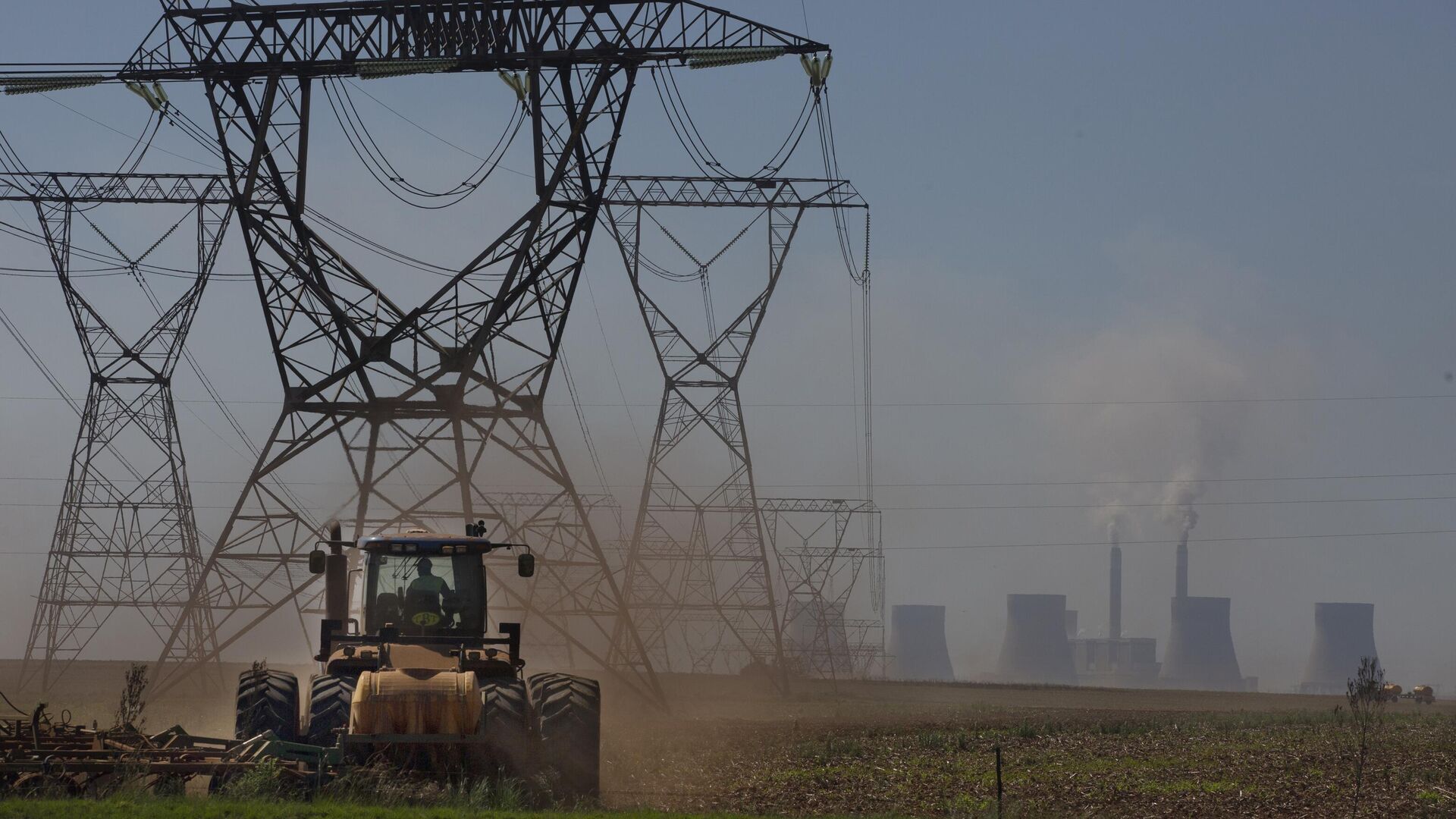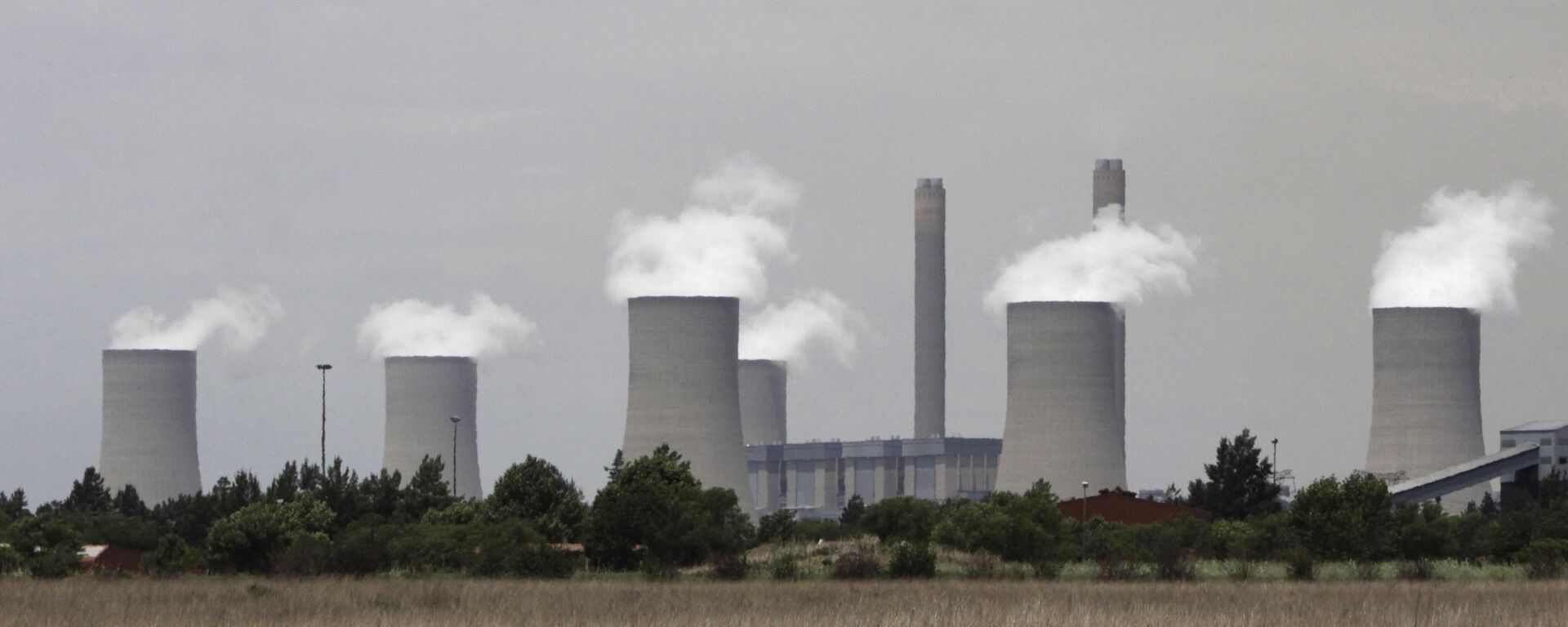https://en.sputniknews.africa/20230511/south-africa-power-crisis-how-have-figures-changed-since-last-year-1059177300.html
South Africa Power Crisis: How Have Figures Changed Since Last Year?
South Africa Power Crisis: How Have Figures Changed Since Last Year?
Sputnik Africa
South Africa's state-run power company Eskom has acknowledged that the quantity of power cuts, known as load shedding and caused by failed power supply to grids, for the year 2023 has surpassed that of 2022.
2023-05-11T12:41+0200
2023-05-11T12:41+0200
2023-05-11T12:41+0200
sub-saharan africa
southern africa
south africa
eskom
electricity
crisis
energy crisis
https://cdn1.img.sputniknews.africa/img/07e7/04/0b/1058500743_0:146:3123:1903_1920x0_80_0_0_1ec9e6e59c3b2c4dba37baa5fe97e520.jpg
South Africa's state-owned power utility, Eskom, has confirmed that the number of power outages, known as load shedding, caused by a lack of power supply to the grid, for the year 2023 has already surpassed that of 2022. In response to inquiries about a graph circulating on social media from the app Load Shedding Notifier, which predicted that planned power outages would exceed last year's levels sometime this week, the South African power utility confirmed that the data is already on track to exceed that of 2022, as indicated by the graph.Notwithstanding, Eskom disputed the stats cited in the graph since they were relatively exaggerated compared to real-time figures. Eskom argued that Load Shedding Notifier app may have considered the loss of 1,000 MW for each stage of power cuts, which during off-peak periods, is far less.Eskom has, however, not disclosed the precise figures indicating gigawatt hours (GWh) of power cuts recorded or the discrepancy amount, exceeding that of 2022.Monique le Roux, who holds a senior research position at the Council for Scientific and Industrial Research (CSIR) Energy Centre, analyzed data measured above 11,000 GWh. Sources for her study included Eskom's publicly available data, as well as data from the EskomSePush smartphone app and the National Energy Regulator of South Africa.Their analysis, according to local media, found that load shedding figures so far this year have not exceeded last year's. However, if the Stage 6 blackouts, which require up to 6,000 megawatts to be shed from the national grid, continue, this year's supply disruptions will exceed those recorded in 2022 between 2:00 p.m. and 17:00 p.m. local time on Thursday.Le Roux claimed that in contrast to 2021, power cuts were four times more frequent in 2022. She warned that the scenario is likely to be repeated in 2023, based on current forecasts.South Africa, one of the most developed nations in Africa, is currently facing a severe electricity crisis that threatens to undermine both its economy and social stability. To handle the situation, the government declared a "national state of disaster" in February-April this year, took on 60% of national power utility Eskom's debt, and established a ministry for electricity.The Electricity Minister, Kgosientsho Ramokgopa, has warned that the coming winter will be particularly challenging. He highlighted concerns regarding the negative impact of load shedding on the economy, including the loss of job opportunities. This is in line with the South African Reserve Bank's previous prediction that power cuts would cause the GDP to drop by two percentage points.Ramokgopa affirmed the government's commitment to address load shedding by implementing the Energy Action Plan, announced by President Cyril Ramaphosa in July 2022. The action plan centers on improving coal-fired power stations' energy availability factor or plant performance. It also aims to attract private sector investment in energy by raising the licensing threshold on embedded generation projects.
https://en.sputniknews.africa/20230423/south-africa-electricity-minister-load-shedding-impossible-to-end-before-2024-1058797173.html
https://en.sputniknews.africa/20230415/south-africas-finance-minister-rules-out-future-bailouts-of-eskom-amid-energy-crisis-1058617539.html
southern africa
south africa
Sputnik Africa
feedback@sputniknews.com
+74956456601
MIA „Rossiya Segodnya“
2023
Muhammad Nooh Osman
https://cdn1.img.sputniknews.africa/img/07e7/04/0a/1058467512_0:0:1280:1280_100x100_80_0_0_ec723833bcbfcaed2e21952965ad99e4.jpg
Muhammad Nooh Osman
https://cdn1.img.sputniknews.africa/img/07e7/04/0a/1058467512_0:0:1280:1280_100x100_80_0_0_ec723833bcbfcaed2e21952965ad99e4.jpg
News
en_EN
Sputnik Africa
feedback@sputniknews.com
+74956456601
MIA „Rossiya Segodnya“
Sputnik Africa
feedback@sputniknews.com
+74956456601
MIA „Rossiya Segodnya“
Muhammad Nooh Osman
https://cdn1.img.sputniknews.africa/img/07e7/04/0a/1058467512_0:0:1280:1280_100x100_80_0_0_ec723833bcbfcaed2e21952965ad99e4.jpg
southern africa, south africa, eskom, electricity, crisis, energy crisis
southern africa, south africa, eskom, electricity, crisis, energy crisis
South Africa Power Crisis: How Have Figures Changed Since Last Year?
Muhammad Nooh Osman
Writer/Editor
An energy crisis caused by underinvestment and a lack of generation capacity has been damaging South Africa's economy since 2007. With blackouts now reaching an unprecedented six hours a day, the national power utility, Eskom, is facing widespread criticism for poor management and corruption.
South Africa's state-owned power utility, Eskom, has confirmed that the number of power outages, known as load shedding, caused by a lack of power supply to the grid, for the year 2023 has already surpassed that of 2022.
In response to inquiries about a graph circulating on social media from the app Load Shedding Notifier, which predicted that planned power outages
would exceed last year's levels sometime this week, the South African power utility confirmed that the data is already on track to exceed that of 2022, as indicated by the graph.
"Yes, the demand not supplied due to load shedding in calendar year 2023 up to midnight on May 7, 2023 exceeded the demand not supplied in the calendar year of 2022," the company said, as cited by local media.
Notwithstanding, Eskom disputed the stats cited in the graph since they were relatively exaggerated compared to real-time figures. Eskom argued that Load Shedding Notifier app may have considered the loss of 1,000 MW for each stage of power cuts, which during off-peak periods, is far less.
Eskom has, however, not disclosed the precise figures indicating gigawatt hours (GWh) of power cuts recorded or the discrepancy amount, exceeding that of 2022.
Monique le Roux, who holds a senior research position at the Council for Scientific and Industrial Research (CSIR) Energy Centre, analyzed data measured above 11,000 GWh. Sources for her study included Eskom's publicly available data, as well as data from the EskomSePush smartphone app and the National Energy Regulator of South Africa.
Their analysis, according to local media, found that load shedding figures so far this year have not exceeded last year's. However, if the Stage 6 blackouts, which require up to 6,000 megawatts to be shed from the national grid, continue, this year's
supply disruptions will exceed those recorded in 2022 between 2:00 p.m. and 17:00 p.m. local time on Thursday.
Le Roux claimed that in contrast to 2021, power cuts were four times more frequent in 2022. She warned that the scenario is likely to be repeated in 2023, based on current forecasts.
Meanwhile, according to the CSIR's analysis, South Africa has experienced 2,896 hours of load shedding so far in 2023, which is less than the total of 3,751 hours in 2022.
South Africa, one of the most developed nations in Africa, is currently facing a severe electricity crisis that threatens to undermine both its economy and social stability. To handle the situation, the government declared a "national state of disaster" in February-April this year, took on 60% of national power utility Eskom's debt, and established a ministry for electricity.
The Electricity Minister, Kgosientsho Ramokgopa, has warned that the coming winter will be particularly challenging. He highlighted concerns regarding the negative impact of load shedding on the economy, including the loss of job opportunities. This is in line with the South African Reserve Bank's previous prediction that
power cuts would cause the GDP to drop by two percentage points.
Ramokgopa affirmed the government's commitment to address load shedding by implementing the Energy Action Plan, announced by President Cyril Ramaphosa in July 2022. The action plan centers on improving coal-fired power stations' energy availability factor or plant performance. It also aims to attract private sector investment in energy by raising the licensing threshold on embedded generation projects.




